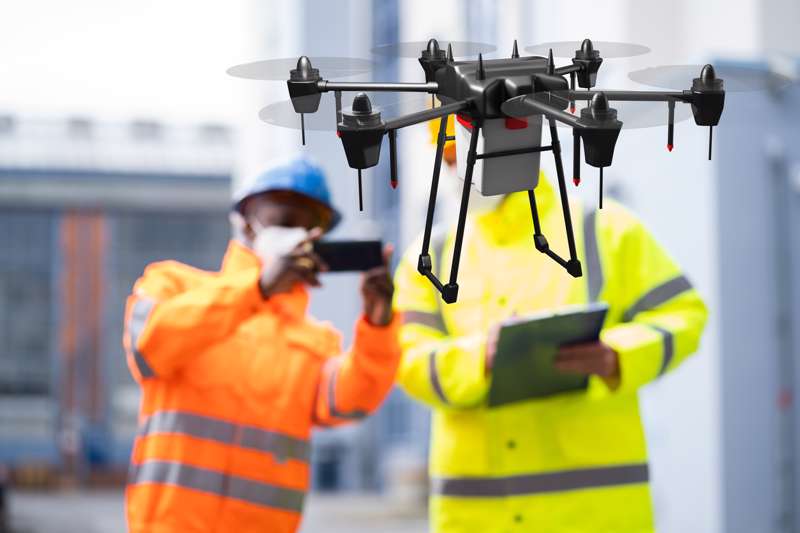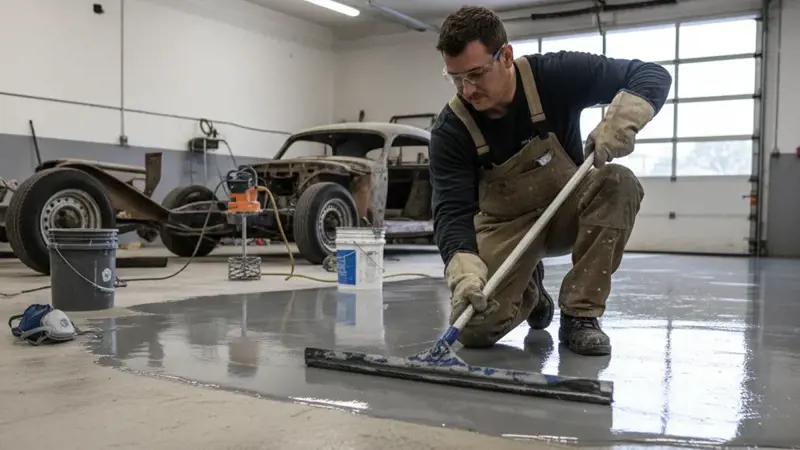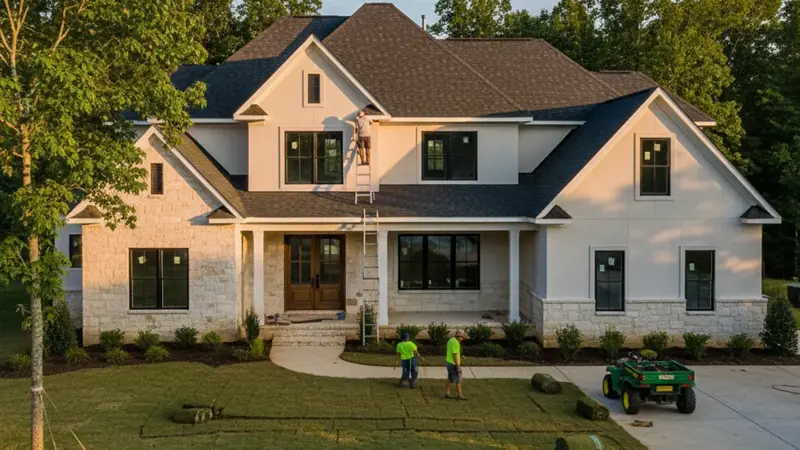Construction has been an essential part of society since the dawn of civilization, but modern technology has completely changed the industry over the last few decades.
From drones to robotics, construction processes are becoming more efficient, faster, and safer than ever.
This change in how things are made may be relatively new, but it's sure to stick around for years.
Let's look at some of the biggest ways technology has impacted the construction industry and where it might be headed in the future.
Increased Productivity
Construction projects are always different from each other and even from day to day depending on weather or other circumstances at job sites - but thanks to technological advances, it has become easier than ever before because people can do tasks faster and more efficiently than ever before which then translates into less time required.
With the help of drones, 3D printing, and GPS-guided machinery, construction workers can do more in less time.
This saves the contractor money and means that projects can be completed faster, which is excellent for customers.
When there is an obvious lack of productivity about the rising demand for construction, issues such as delayed completion start arising, and new technology has proven critical for the industry; it helps cut down on delays because it can't be made into a generic one size fits all process.
Modular construction
Building the way we do now is no longer enough; construction needs to be done as quickly and efficiently as possible.
Many ways of doing this, including prefabrication and off-site construction, help make the process easier.
Prefabricated buildings consist of parts built elsewhere before being brought together at the site - this saves valuable time.
This method has been around for a while, but 3D printing techniques for prefabrication are entirely new to the industry. With these techniques, you can program exactly what shape or size you need from something like cements, metals, or plastics.
Once everything cools down, it hardens and can be used for whatever purpose was desired beforehand. Off-site construction can be done both with modularity or prefabricates.
Modular construction entails constructing an entire room out of the correct fixtures and fittings, usually done when building large apartment complexes or hotels.
With prefabrication, important components such as framing, internal and external wall panels, doors, and windows are put together off-site before being assembled at their designated locations where they make sense.
Artificial Intelligence
AI and machine learning systems are becoming increasingly prevalent in construction fields.
Productivity is significantly boosted for sites that adopt these technologies because they can handle specific tasks that would otherwise require a human to complete.
By utilizing them, humans can focus on more pressing matters on the job site without being constrained by tedious tasks - allocating their time wisely. One of the most significant things these technologies allow humans to do is track how much time one spends moving around the site.
As one executes their duties, AI systems can track actions such as retrieving tools, materials, and other equipment.
These datasets could then be analyzed so you may create a list of optimal ways to store and organize items, decreasing the time it takes per day while complete an action.
AIs can also help in monitoring projects' progression.
Utilizing cameras to document every step of the project and then comparing them against BIM models, 3D drawings, and construction schedules lets us know how much progress has been made each day.
Not only can they track performance, but AI techs can also quickly spot any structural issues you might have already faced or could face in the future. Productivity largely relies on a reliable supply chain which any construction site depends on for its success—running out of key supplies will significantly slow work down and push back completion dates.
AIs can analyze relevant data points like inventory levels and just how fast resources are being depleted; this information helps ensure that we never run out of essentials by alerting workers when it's time to reorder before stocks completely deplete.
Easy Project Collaboration
Collaboration is a valuable part of almost any company, including construction.
Many players in the construction industry rely on each other to complete projects, and technologies exist to help these workers coordinate with one another for a well-rounded process.
Technology and Estimation Software
Technology has helped contractors become more efficient and accurate in their work in today's construction industry.
In the past, construction projects were often delayed due to inaccurate estimation.
Using estimating software like 247PRO, can help you create the estimates and send invoices easily and simply.
Maintaining an organized construction project is key to successful management.
There are many things to keep track of, including employees, schedules, permits, etc.
This has helped to reduce delays and increase safety. Additionally, data management has become easier with new software that can help track progress and identify potential issues.
247PRO software helps manage millions of data points and records by providing labor costs, job costing, project management, equipment and inventory management, etc.
Since these software offer so many benefits and are crucial in the construction industry - they can be beneficial for those in the construction industry who rely on multiple programs when dealing with projects.
Moreover, with new technology, such as drones and 3D imaging, contractors can now get a more accurate picture of a project site.
Increased Safety
Preventing work accidents that lead to severe injury or death should always be a priority in the construction industry.
Safety for everyone involved is paramount, and thanks to technology, job sites are much safer now than ever before.
Increased safety is one of technology's most significant impacts on the construction industry.
With new safety features and data management capabilities, construction workers can avoid accidents and injuries.
By formalizing safety protocols and procedures, construction companies can create a safer work environment for their employees.
Proper safety and equipment operation training is one of the most crucial components of any construction project.
To keep workers safe, they must understand how to carry out each task correctly.
Training also becomes challenging because it poses risks, even if you're already an expert at completing tasks on a job site.
Wearable Technology
When it comes to personal protection equipment required on construction sites, most people think of hard hats, gloves, and good work boots.
But there's so much more that goes into keeping workers safe during every construction process.
For example, in addition to the traditional wearables - you know, those things we've always seen worn by contractors - there are a lot of technological innovations that affect how well we can protect ourselves out there on job sites.
Many construction sites have integrated all sorts of 'wearable' technology. Think about biometrics or environmental sensors, for starters!
Those systems monitor worker movement and warn when we're about to do something dangerous, like enter restricted areas set up via geofencing software which operates through audio alarms and visual alerts when you get too close to one of those spaces defined beforehand.
Technology has given us new ways to monitor construction workers' physical health closely.
So-called smart clothing can monitor a worker's heart rate and breathing pattern to track any abnormalities in their postures or movements.
By doing so, they can assess whether or not the worker can complete tasks at hand—no matter how difficult they may be.
On-site Sensors
Construction sites are filled with various different types of dangers. Extremely high noise levels, high temperatures, large amounts of dust and dirt, and volatile substances risk continuously exposed workers.
Specific sensors can be mounted on site, so environments are closely monitored for safe working conditions.
If any levels get too high, work stoppage begins immediately to avoid putting lives at further risk.
Reducing Labor Shortages
In recent years, the construction industry has been met with several struggles as they cannot find sufficient workers to complete the increasing number of jobs.
Newer entrants into this field tend to lack the knowledge or experience that their predecessors had, making it increasingly difficult for businesses needing these skillsets like welding or concrete placement.
With people retiring and children taking jobs outside of this sector, it's hard not to notice that significantly fewer people want jobs in construction today than before.
Robots and Drones
When humans cannot provide adequate labor, automation and machinery become necessary.
Robots can perform tedious and time-consuming jobs - such as laying bricks or tying steel bars - twice as fast without getting tired as humans would after completing this type of work for hours.
Robots can't function properly unless someone is supervising them at all times. However, they provide a valuable resource for organizations since professionals are needed to ensure everything runs smoothly - stopping potential mishaps before they escalate.
Robots' assistance makes construction tasks more manageable and allows workers to finish projects faster than other methods.
Drones have also been put to work in the construction industry.
For hazardous tasks, such as inspecting high-rise buildings or construction sites, drones offer a close-up view for workers on the ground, who will remain safe from harm.
Drones are helpful even when photographing projects from overhead; they allow us to track where we've come from and where we're going - thereby enhancing safety precautions and getting all parties involved up-to-date with new perspectives (and therefore better informed).
Terrestrial drones are helpful for many different tasks on the ground. Terrestrial drones can collect information from all over a job site property by utilizing their unique functions such as light detection, range scanning data, and censors.
Heavy equipment operation
While some jobs are impossible to automate entirely due to human limitations, autonomous equipment can be utilized to make specific tasks easier.
For example, this innovation in the construction industry makes it, so workers don't need to perform strenuous labor - instead, they can focus on other aspects of projects.
This is especially useful when there is a workforce shortage for specific tasks or increased workloads.
Autonomous heavy equipment moves along its assigned path without requiring human input using a mix of sensors, drones, GPS, and 3D models.
This system saves time and money while ensuring worker safety thanks to geofencing alerts when an individual strays too close to an area that needs work.
Furthermore, this technique can also contain the movement of these vehicles to only those areas where necessary without entering others that may pose hazards.
Conclusion
While technology has changed the construction industry several ways, safety and data management have had the most significant impacts. Construction workers can now use GPS systems to track their location, which has made worksites much safer.
In addition, new software programs have been developed that help construction managers keep track of project progress and budgeting.
As construction companies adopt new technologies, we expect even more changes in how projects are planned, managed, and executed.


